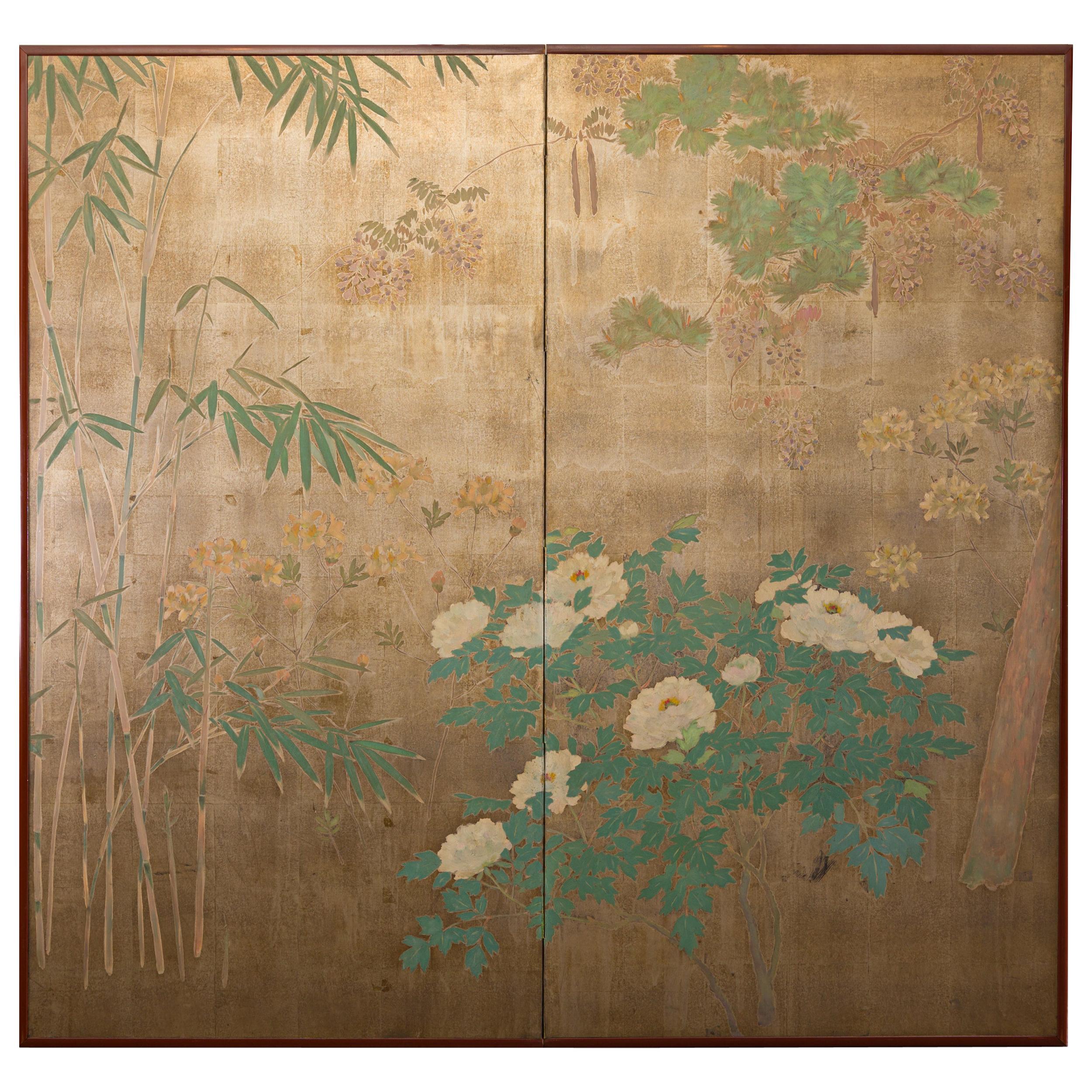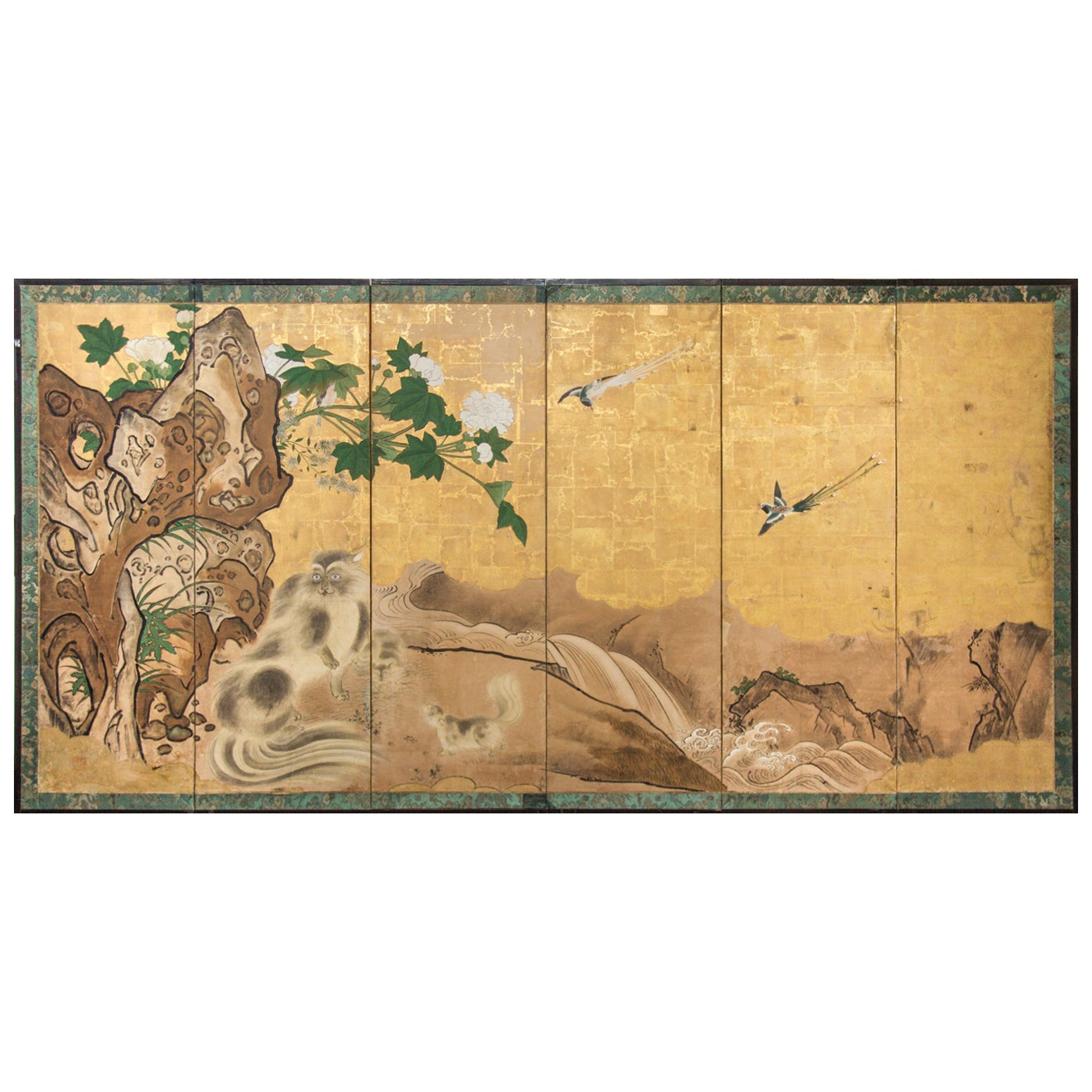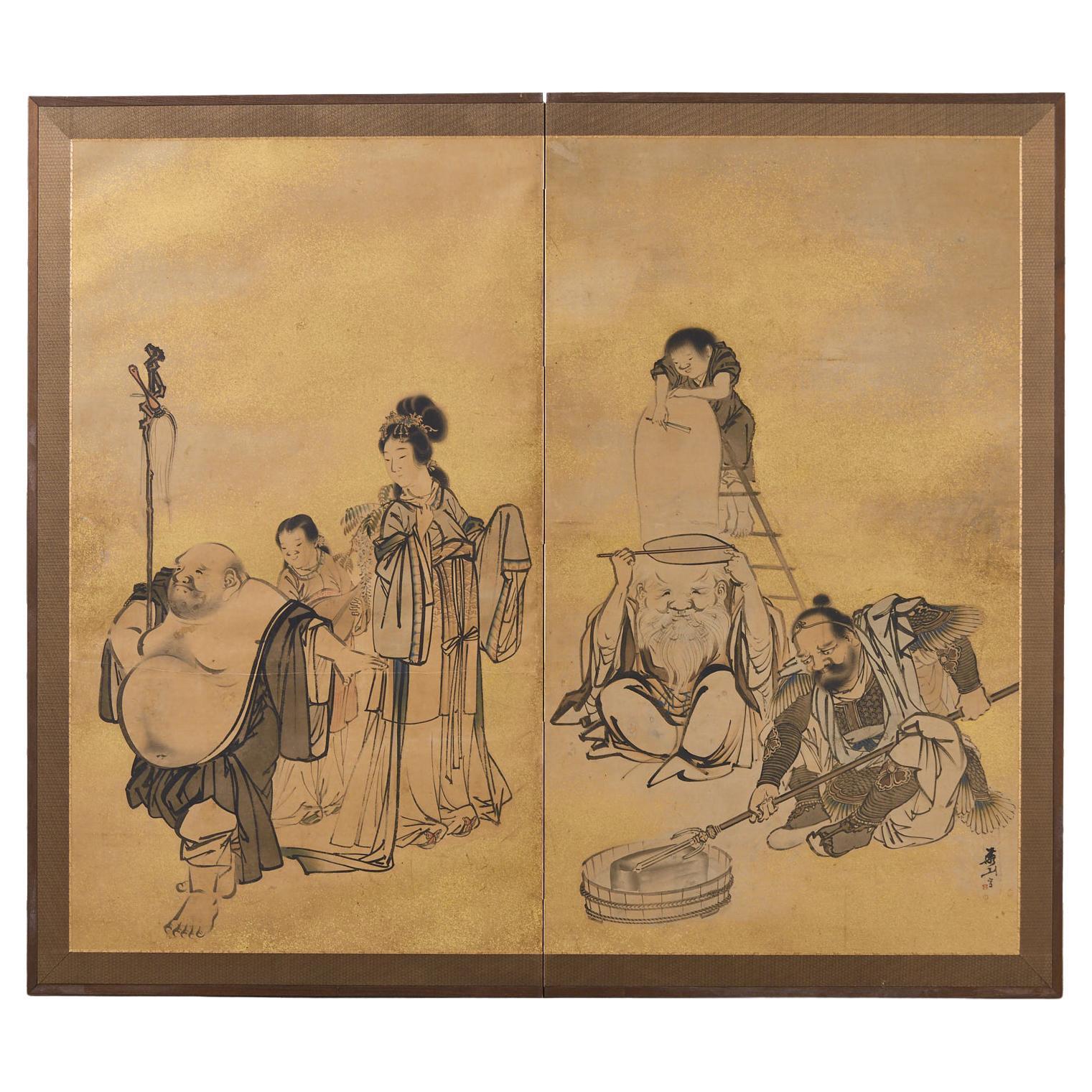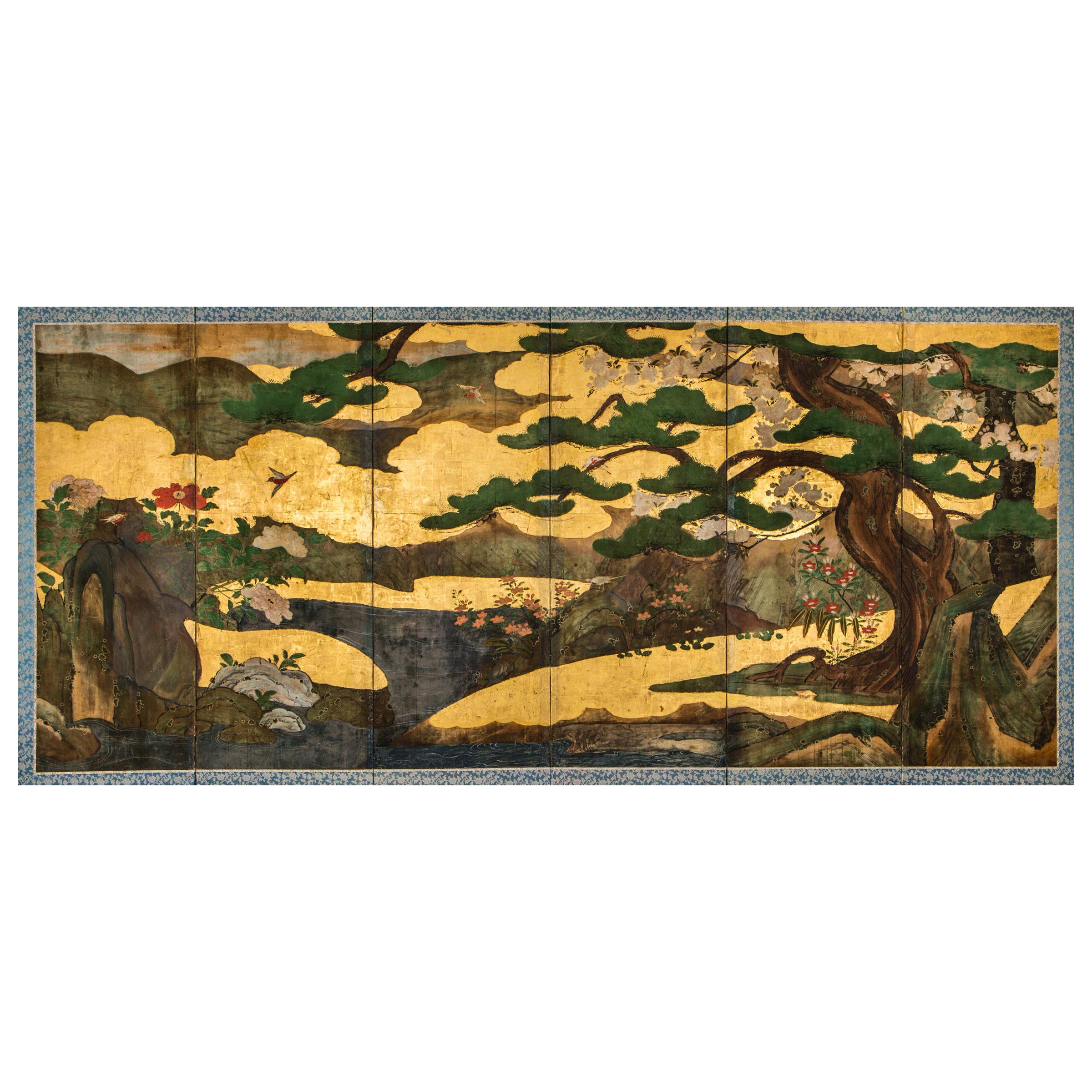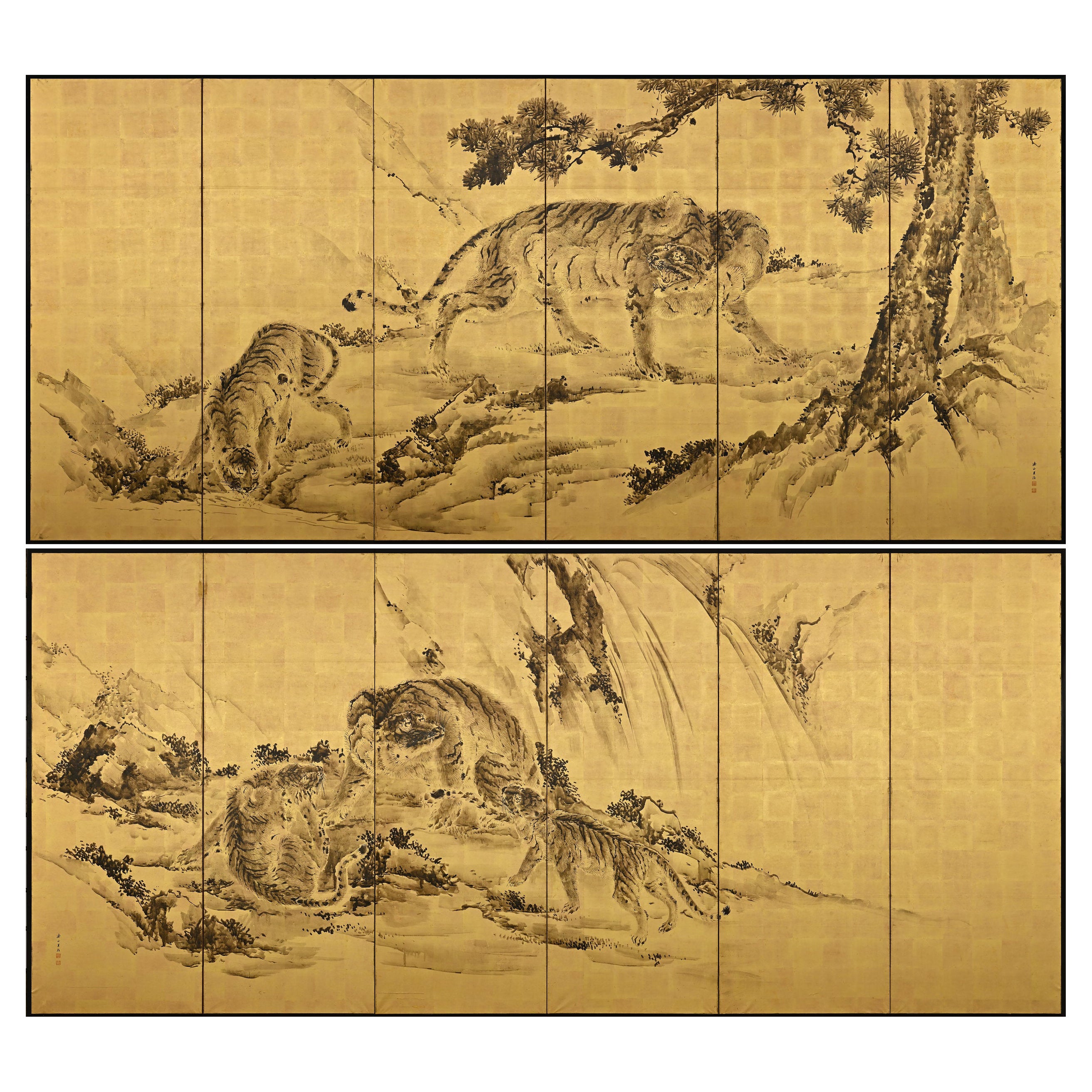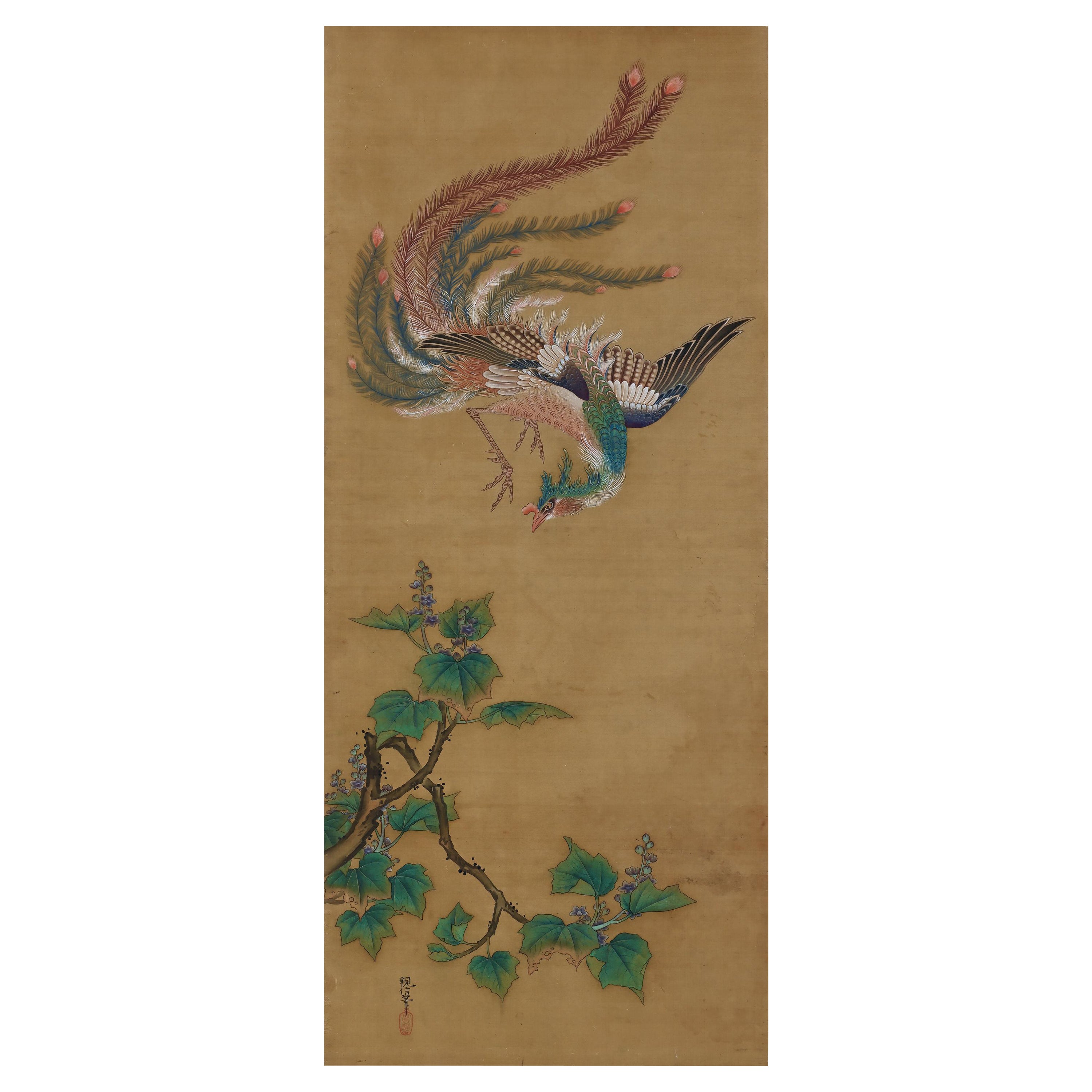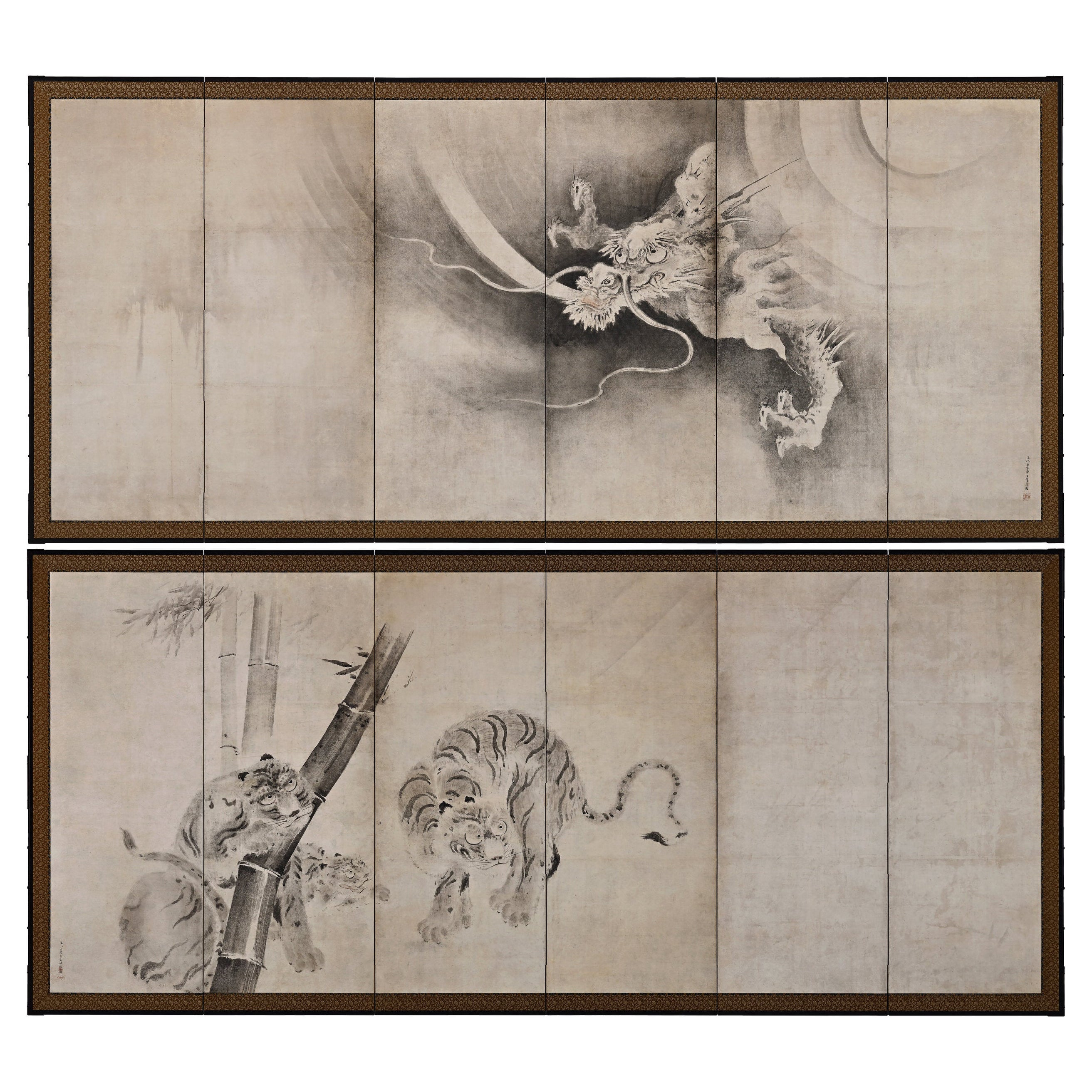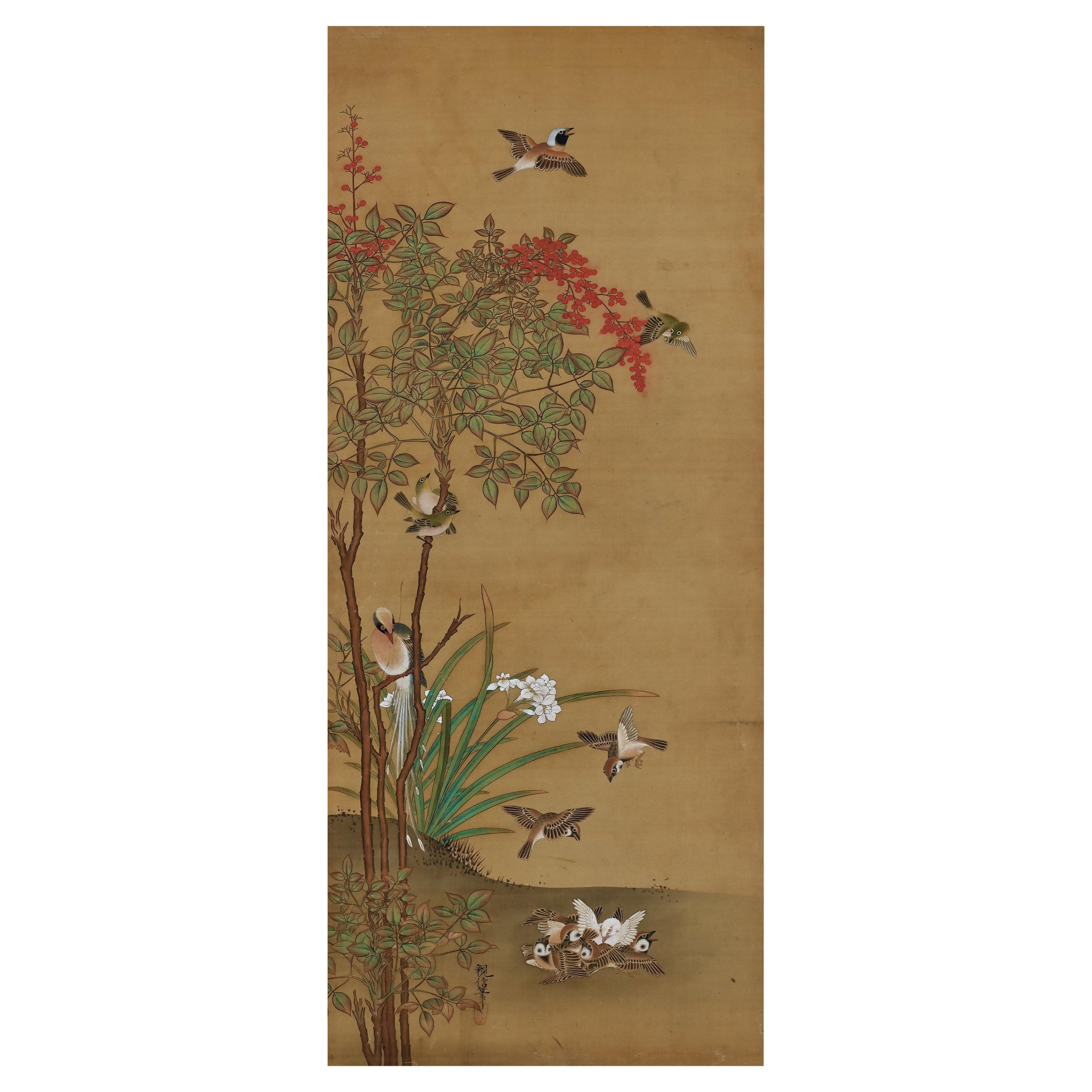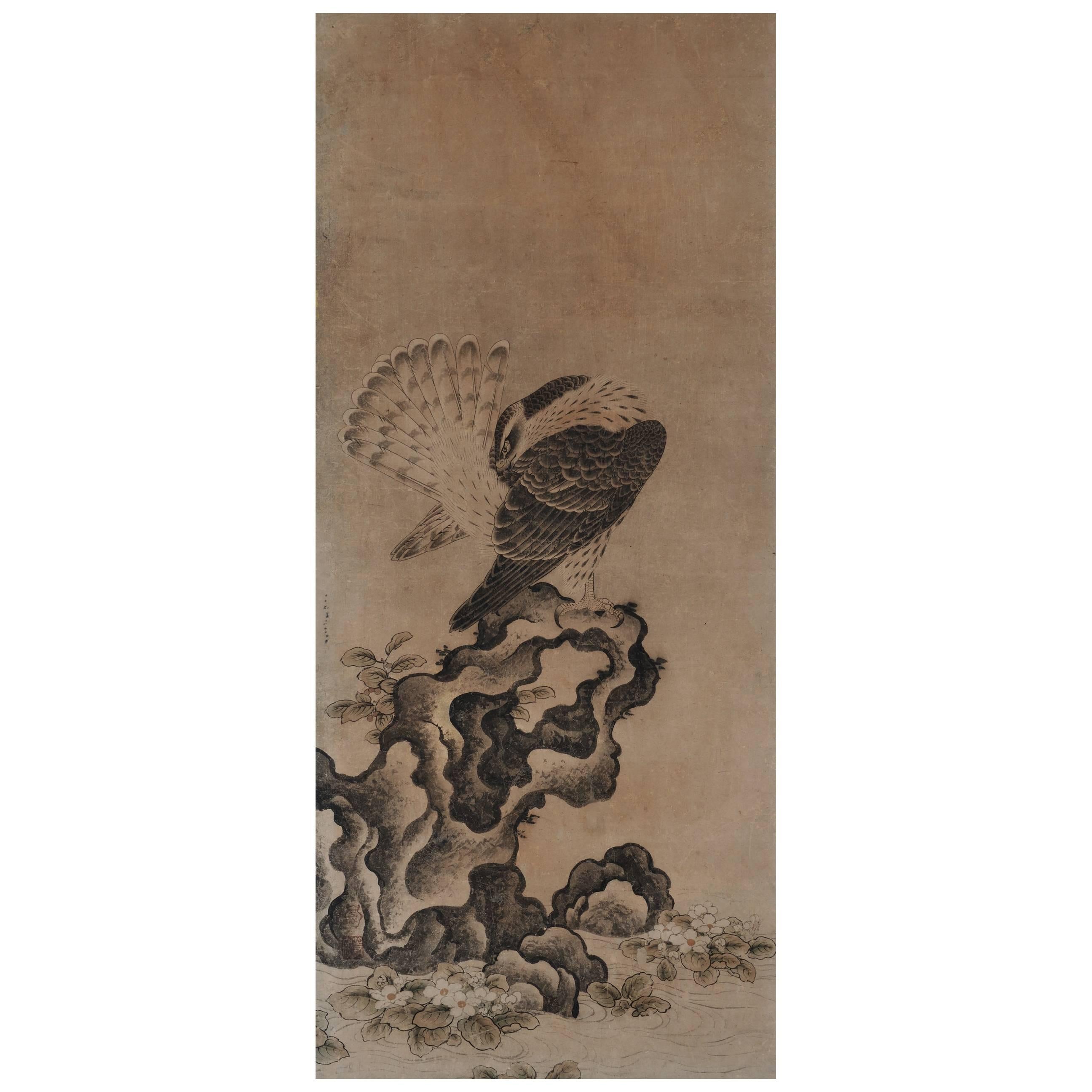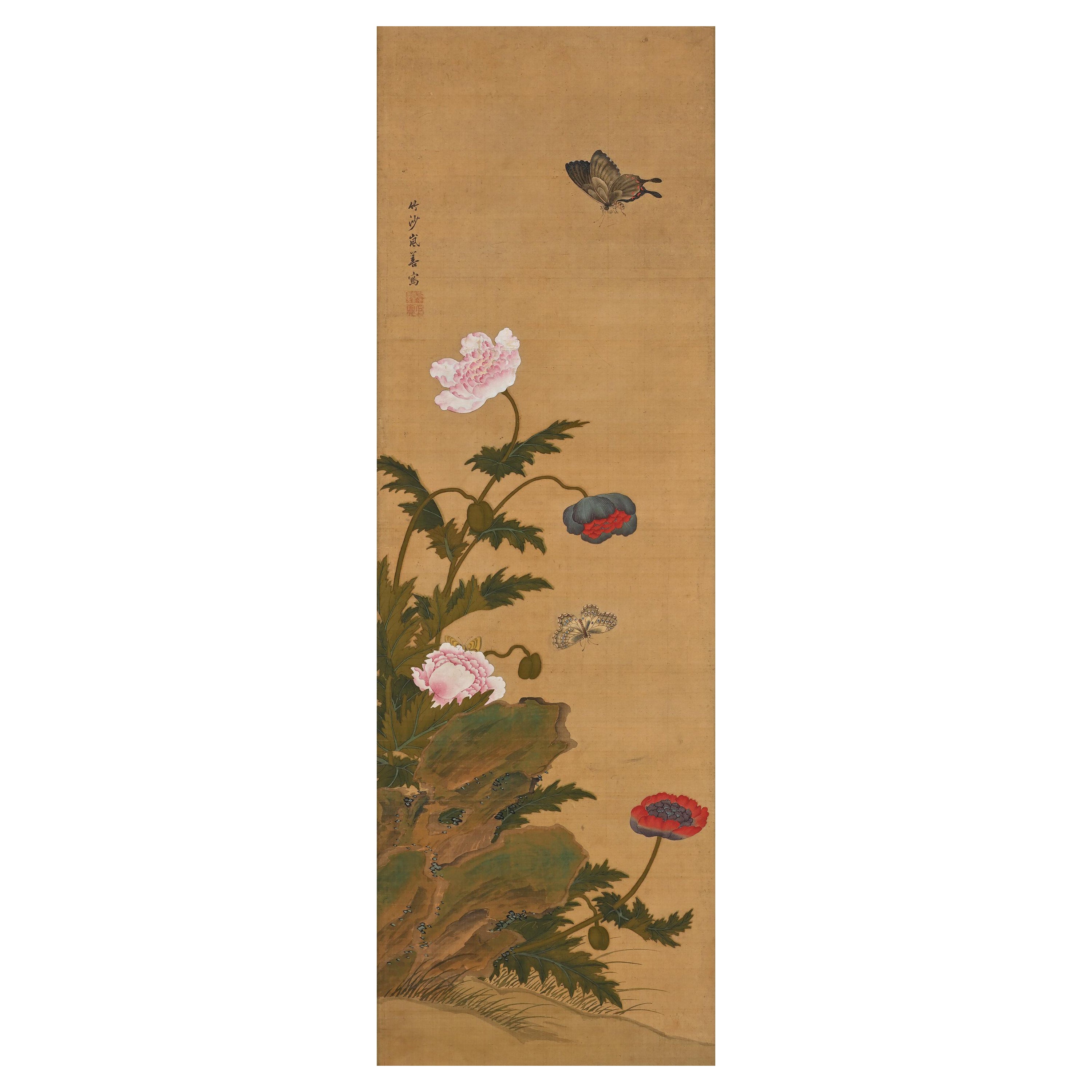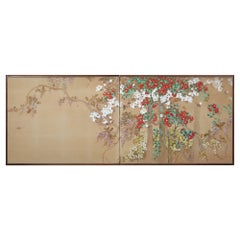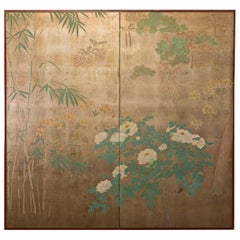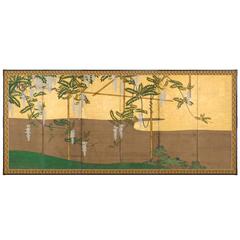
Wisteria by a Stream
View Similar Items
1 of 1
Wisteria by a Stream
About the Item
- Dimensions:Height: 67 in (170.18 cm)Width: 148 in (375.92 cm)Depth: 1 in (2.54 cm)
- Style:Edo (Of the Period)
- Place of Origin:
- Period:
- Date of Manufacture:circa 1800
- Condition:
- Seller Location:New York, NY
- Reference Number:Seller: T-36841stDibs: LU89883505452
You May Also Like
- Japanese Two Panel Screen: Flowering Vines and WisteriaLocated in Hudson, NYWisteria represents sentiments of love and longevity as vibrant floral colors dance dramatically amongst the two panels. Mineral pigments on Mulberry paper with a natural wood trim....Category
Early 20th Century Japanese Paintings and Screens
MaterialsWood, Paper
- Japanese Two-Panel Screen Peony, Wisteria, Cherry and Bamboo on Soft SilverLocated in Hudson, NYJapanese two-panel screen: Peony, Wisteria, cherry and bamboo on soft silver, Meiji period (1868-1912) painting of a garden in spring. Painted in mineral pigments on oxidized silver ...Category
Antique Early 1900s Japanese Meiji Paintings and Screens
MaterialsSilver Leaf
- Japanese Six Panel Screen Mother Cat and Kittens Near Rushing StreamLocated in Hudson, NYKano School painting, in mineral pigments and gold leaf on mulberry paper with a silk brocade border. Artist seal reads: Hokkyo Unsen.Category
Antique Early 19th Century Japanese Paintings and Screens
MaterialsGold Leaf
- Japanese Edo Two Panel Screen Deities by Yokoyama KazanLocated in Rio Vista, CAWhimsical Japanese late Edo period two-panel screen circa 1800 by Yokoyama Kazan (Japanese 1784-1837). The screen depicts four of the seven Gods or deities ...Category
Antique 19th Century Japanese Edo Paintings and Screens
MaterialsBrass, Gold Leaf
- Japanese Six-Panel Screen Garden Landscape by River's EdgeLocated in Hudson, NYKano School painting showing ancient pine, exotic birds, peonies, azalea and cherry tree in bloom on far right. Early Edo period painting, (1614 -...Category
Antique Late 17th Century Japanese Edo Paintings and Screens
MaterialsGold Leaf
- Japanese Screen Painting, circa 1700 'Horses' by Kano TanshinLocated in Kyoto, JPHorses Kano Tanshin Morimasa (1653-1718) Two-panel tea-ceremony Japanese screen or furosaki Ink on gold leaf, late 17th-early 18th century Measures: H 55 cm x W 182 cm The Kano school was closely aligned with the warrior class in Japan. The samurai, who lived in a closed and rigid hierarchical society established by the Shogunate, were drawn to the energy and freedom horses symbolize; Kano school artists commonly depicted the equine creatures as they are here, in unfettered and carefree family groups. China originally introduced horse paintings to Japan; the works typically focused on capturing the essence of horses in their various environments and often involved integrating human figures into the images. Kano Tanshin Morimasa (1653-1718) was the son of Kano Tanyu...Category
Antique 1690s Japanese Edo Paintings and Screens
MaterialsGold Leaf

